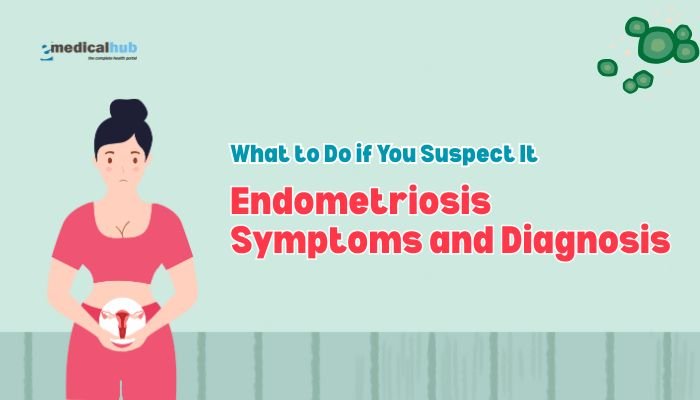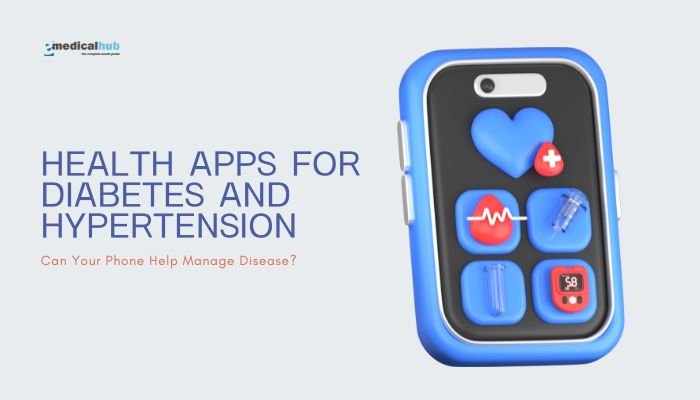Introduction
In recent years, epidemiological data from many developed and developing nations have indicated a troubling trend: sexually transmitted infections (STIs) such as syphilis, gonorrhea, and chlamydia are on the rise, reversing downward trajectories achieved in prior decades.
Among these, syphilis—a disease once declared nearly vanquished in multiple regions—has returned to headlines, surprising many public health officials. Though improved diagnostics and increased testing partly explain higher reported rates, experts agree that changing behaviors, socio-cultural shifts, and gaps in healthcare access contribute significantly to this resurgence.
This article focuses on syphilis as a case study for STI resurgence, examining how this once-rampant disease nearly disappeared and why it is now reappearing. We will look at the clinical manifestations of syphilis, risk factors, modern treatment, and the broader context of STIs reemerging worldwide.
By recognizing the intersection of social factors, health policy, and individual behavior, we can better respond to these evolving sexual health challenges and prevent further spread of infections that remain both treatable and preventable.
A Brief History of Syphilis
Early Accounts and Global Spread
- Origins: Syphilis is believed to have emerged in Europe around the late 15th century—some historians attribute its earliest major outbreak to returning explorers from the Americas.
- Infamy: Often called the “great pox,” it sparked panic for centuries, producing severe disfigurement or even madness in untreated individuals.
Era of Antibiotics
- Penicillin Revolution: The 1940s introduction of penicillin ushered in a new era of treatability, dramatically reducing syphilis prevalence in countries with robust healthcare.
- 20th Century Decline: Aggressive public health campaigns and widely available penicillin lowered syphilis rates to near-historic lows by the 1980s in many parts of the world.
Near-Under Control, Then Rebound
- Early 2000s: Public health agencies reported new clusters and local outbreaks, raising concern about a creeping comeback.
- Today’s Reality: Syphilis rates in some countries have spiked to levels not seen in decades, prompting renewed focus on screening and education.
Understanding Syphilis: The Basics
The Pathogen: Treponema pallidum
- Spirochete Bacterium: Spiral-shaped organism that enters through mucous membranes or minor abrasions, typically during sexual contact.
- Fragility: Outside the human body, T. pallidum survives poorly, highlighting the need for close personal contact for transmission.
Stages and Symptoms
- Primary Syphilis:
- Usually presents as a painless ulcer (chancre) at the infection site ~3 weeks post-exposure.
- The chancre typically heals spontaneously, even without treatment.
- Secondary Syphilis:
- Occurs weeks to months later, often with a diffuse rash (commonly on palms and soles), fever, lymphadenopathy.
- Highly infectious period.
- Latent Stage:
- May be asymptomatic for months or years.
- Early latent (<1 year post-infection) is still potentially infectious; late latent is generally less contagious.
- Tertiary Syphilis:
- Can emerge years later, affecting the cardiovascular system (aortitis), nervous system (neurosyphilis), or forming gummas (granulomatous lesions) in various tissues.
- Possibly debilitating or fatal if not addressed.
Transmission Modes
- Sexual Transmission: Unprotected vaginal, anal, or oral sex with an infectious lesion.
- Vertical Transmission (Congenital Syphilis): Infected pregnant women can pass it to the fetus, leading to severe neonatal complications.
- Blood Contact: Rare with modern blood screening, but historically a route.
Diagnosis and Treatment
- Serologic Tests:
- Nontreponemal (RPR, VDRL) used for screening.
- Treponemal (FTA-ABS, TP-PA) confirm infection.
- Penicillin G: Remains the gold-standard treatment; alternative antibiotics can be used for penicillin-allergic individuals, but penicillin is vital for neurosyphilis or pregnancy.
- Follow-Up: Ongoing titer checks ensure successful therapy, watch for reinfection or treatment failure.
Syphilis Resurgence: Contributing Factors
Changing Sexual Behaviors
- Reduced Fear of HIV: The advent of effective HIV therapies might have lessened perceived risk, leading some to adopt fewer protective measures.
- Dating Apps: Digital platforms facilitating quick, casual sexual encounters can accelerate the spread of STIs if partners are untested.
- Condom Fatigue: People might be less consistent with barrier protection than in earlier decades, especially in stable or perceived “low-risk” relationships.
Inadequate Public Health Focus
- Diminished Funding: Historical successes in controlling STIs led to reallocation of resources. Over time, cuts in STI clinics or contact-tracing programs hamper quick outbreak responses.
- Screening Gaps: Many individuals, especially men who have sex with men (MSM) or other high-risk populations, may not get routine tests. Untreated infections quietly spread.
Stigma and Awareness
- Reluctance to Seek Help: Fear or embarrassment about sexual health can delay diagnosis. This fosters unintentional further transmission.
- Undiagnosed Infections: Early syphilis lesions might be painless or hidden, leading to a lack of prompt medical attention.
Rise of Congenital Syphilis
- Maternal Screening: If pregnant women do not receive adequate prenatal care or syphilis testing, the infection can pass to babies, leading to congenital syphilis. Rates have soared in certain areas.
STIs More Broadly: Why Are They Rising?
Weakened Prevention Infrastructure
- Less Funding for Clinics: Many specialized STI clinics face budget constraints, limiting outreach, testing, or quick treatment access.
- Deprioritization: In the wake of other healthcare concerns (like the opioid crisis or COVID-19), routine sexual health promotion can fade from priority.
Globalization and Mobility
- Travel: Movement across borders, especially for business or tourism, can import or export STI strains to new populations.
- Urban Clusters: Crowded nightlife or social scenes in major cities facilitate rapid sexual network connections.
Social and Cultural Shifts
- Contraceptive Emphasis: Some rely on birth control methods that prevent pregnancy but not STIs (e.g., oral contraceptives).
- Lack of Comprehensive Sex Education: Misinformation or patchy knowledge about safe sex practices hamper prevention.
Populations at Particular Risk
Men Who Have Sex with Men (MSM)
- Epidemiological Observations: MSM communities often see higher rates of syphilis, gonorrhea, or HIV, partly due to network effects—small, interconnected sexual networks can quickly amplify an infection.
- Stigma: Discrimination can limit care-seeking. Tailored, culturally competent interventions are vital.
Adolescents and Young Adults
- Exploring Sexuality: Younger individuals have higher partner turnover, less consistent protection usage, or limited healthcare access.
- Education Gaps: Poor knowledge about STIs or free clinics. Confusion about how to get tested discreetly.
Congenital Syphilis Cases
- Socioeconomic Disadvantages: Pregnant women lacking prenatal screening or stable healthcare are more likely to transmit syphilis to newborns.
- Global Disparities: In regions with limited resources, congenital syphilis remains a major cause of infant mortality or developmental problems.
Warning Signs and When to Get Tested
Recognizing Primary and Secondary Syphilis
- Painless Chancre: Often overlooked, it might appear on hidden areas (inside mouth, genitals).
- Rash: A symmetrical rash on palms/soles, or trunk, with possible mild fever, enlarged lymph nodes.
Broad Red Flags for STIs
- Unusual Discharge: Any new discharge from genitals could signal an STI.
- Burning or Pain: During urination or intercourse.
- General Lethargy, Aching: Some STIs mimic flu-like symptoms in early phases.
Importance of Regular Testing
- Routine Screenings: For sexually active adults, especially those with new or multiple partners, annual (or more frequent) tests.
- Partner Testing: Transparency about test results fosters earlier detection if one partner has an STI.
Prevention and Harm Reduction Strategies
Safer Sex Practices
- Condom Use: Still the frontline barrier method for many STIs, including syphilis (though not foolproof for lesions outside the area a condom covers).
- Limiting Partners: Fewer sexual partners or a monogamous arrangement with a tested partner can reduce exposure risk.
- Communication: Open dialogue with potential partners about STI status, testing history, and protection preferences.
Public Health Measures
- Contact Tracing: Swift follow-up with sexual partners of infected individuals helps cut transmission chains.
- Community Education: Workshops, campaigns highlighting STI signs, safe sex, and access to free or affordable clinics.
- At-Home Testing Kits: Rising acceptance can reduce stigma, encouraging more frequent, convenient screening.
Vaccinations and Prophylaxis
- HPV Vaccine: Not for syphilis, but important in broader STI prevention. Potential synergy with other sexual health programs.
- HIV Pre-Exposure Prophylaxis (PrEP): Doesn’t prevent syphilis, but it’s part of integrated sexual health strategies that also emphasize synergy in testing.
Treatment Approaches for Syphilis
Penicillin G Injections
- First-Line Therapy: For early syphilis, a single intramuscular injection of benzathine penicillin G typically suffices.
- Late or Neurosyphilis: Multiple doses or intravenous regimens are mandatory to thoroughly clear the infection.
- Monitoring: Follow-up blood tests (non-treponemal titer) ensure treatment success, with titers dropping over months.
Alternative Antibiotics
- Doxycycline or Azithromycin: For penicillin-allergic patients (careful with pregnant women—penicillin desensitization is recommended if possible).
- Resistance Issues: Syphilis remains largely sensitive to penicillin. Some worry about emerging azithromycin resistance, but penicillin remains the gold standard.
Partners and Reinfection
- Partner Notification: Sexual contacts need testing and prophylactic treatment to prevent repeated cycles.
- Abstinence or Safer Sex: Until therapy completes, clinicians advise caution to avoid immediate re-infection.
Future Directions and Novel Approaches
Enhanced Testing Modalities
- Rapid Point-of-Care Tests: More widely used in resource-limited areas, bridging gaps in remote populations.
- Multiplex Testing: Single kits that simultaneously screen for multiple STIs (syphilis, HIV, hepatitis) could broaden detection coverage.
Vaccines for Bacterial STIs
- Syphilis Vaccine Research: Historically overshadowed by other priorities, but renewed interest has emerged as syphilis climbs. Development challenges remain, given T. pallidum’s complexities.
- Broad-Spectrum Approaches: Investigating universal gonococcal or chlamydial vaccines might also shift epidemiological patterns.
Social Media and Tech Initiatives
- Awareness Campaigns: Using apps or social media to push safe sex messages, promote “Get tested” days.
- Anonymous Partner Notification: Platforms enabling discreet partner alerts to cut stigma or confrontation.
Conclusion
Syphilis, once considered a vestige of the past, is reemerging globally, underscoring the dynamic nature of sexually transmitted infections. Changes in sexual behavior, decreased emphasis on prevention, and social stigma all converge to reignite a disease that remains entirely curable if identified and addressed early. Meanwhile, the overall climb in STIs—gonorrhea, chlamydia, and syphilis among them—represents a broader rollback of public health gains, possibly overshadowed by other healthcare priorities or hamper by funding shortfalls.
The good news is that syphilis is neither incurable nor unstoppable. Timely screening, consistent condom usage, thorough contact tracing, and antibiotic treatment remain effective weapons. On a personal level, increased vigilance—awareness of potential symptoms, regular checkups, open communication with partners—can minimize risk and ensure swift resolution if infected. Ultimately, beating back syphilis and reversing STI surges requires a synchronized effort by individuals, healthcare providers, and public health infrastructures, reaffirming that vigilance, knowledge, and accessibility are central to safeguarding sexual health in modern societies.
Frequently Asked Questions (FAQ)
- Can I get syphilis from casual contact like sharing utensils or hugging?
- No, syphilis typically spreads through direct contact with a chancre or mucous membranes during sexual contact. Casual touching or hugging doesn’t transmit it.
- If I tested positive for syphilis in the past and was treated, can I get it again?
- Yes, successful treatment confers no immunity. You can be re-infected from an untreated partner or new exposure.
- Do condoms fully prevent syphilis?
- Condoms significantly reduce risk but may not cover all sores if they appear on areas not shielded. Still, consistent use is strongly advised.
- I’m pregnant. How does syphilis affect my baby?
- If untreated, syphilis can cross the placenta (congenital syphilis) potentially leading to miscarriage, stillbirth, or severe neonatal issues. Prompt screening and treatment are vital.
- I have HIV. Does that change syphilis testing or treatment?
- HIV can complicate syphilis course, sometimes accelerating disease. People with HIV often need more careful screening and sometimes extended antibiotic regimens.
- What if I’m allergic to penicillin?
- Penicillin is the best option, especially for pregnant women or neurosyphilis. For other cases, alternatives exist; in many circumstances, doctors might do a penicillin desensitization procedure.
- Should I get a syphilis test if I have no symptoms?
- If you’re sexually active with multiple partners or suspect an exposure, yes. Many forms of syphilis can be asymptomatic or mild early on, but still contagious.
References
- Centers for Disease Control and Prevention (CDC). Sexually transmitted disease surveillance 2020: Syphilis. 2021.
- World Health Organization (WHO). Global incidence and prevalence of syphilis, gonorrhoea, and chlamydia. 2019.
- Peterman TA, et al. The changing epidemiology of syphilis. Sex Transm Dis. 2020;47(9):587-589.
- U.S. Preventive Services Task Force. Screening for syphilis infection in nonpregnant adults and adolescents. JAMA. 2016;315(21):2321-2327.
- Golden MR, et al. Public health implications of rising syphilis prevalence. Curr Opin Infect Dis. 2021;34(1):13-19.
- Workowski KA, Bolan GA. Sexually transmitted diseases treatment guidelines. MMWR Recomm Rep. 2015;64(RR-03):1-137.
- Marra CM, et al. Syphilis reinfection and the threat to global elimination. Sex Transm Infect. 2020;96(6):421-422.
- Bonacini M, et al. Congenital syphilis outcomes. Obstet Gynecol. 2021;137(3):513-520.
- Stamm LV. Global challenge of antibiotic-resistant Treponema pallidum. Lancet Infect Dis. 2010;10(4):238-241.
- Rosenberg NE, et al. Partner notification for syphilis in the digital age. J Infect Dis. 2018;218(8):1294-1299.
- Peeling RW, Mabey D. Point-of-care tests for diagnosing syphilis. Clin Microbiol Infect. 2010;16(8):1066-1073.
- Salazar JC, Hazlett KR, Radolf JD. The immune response to Treponema pallidum. Immunol Rev. 2008;225:229-245.
- Lewis FM. Early diagnosis and management of syphilis. Curr Infect Dis Rep. 2017;19(11):37.
- Rawla P, et al. Epidemiology, treatment, and prevention of syphilis. In: StatPearls. Updated 2021.







